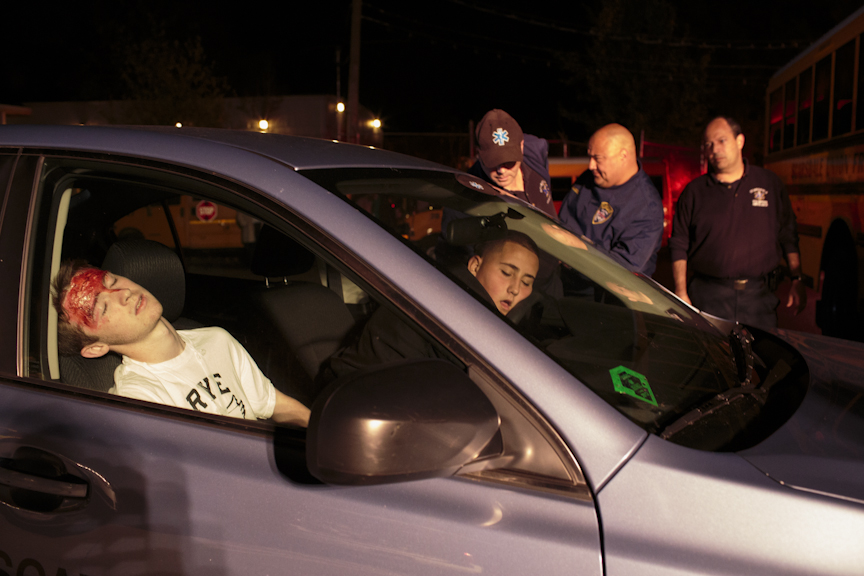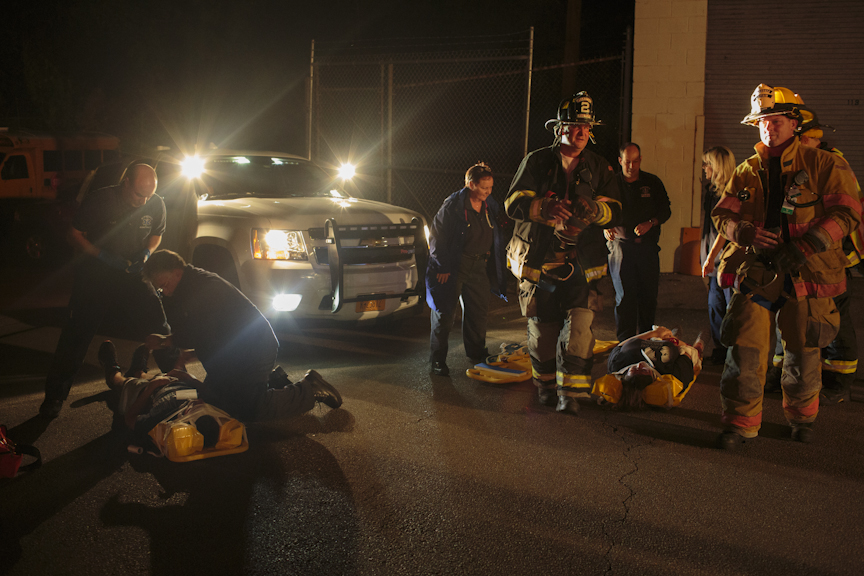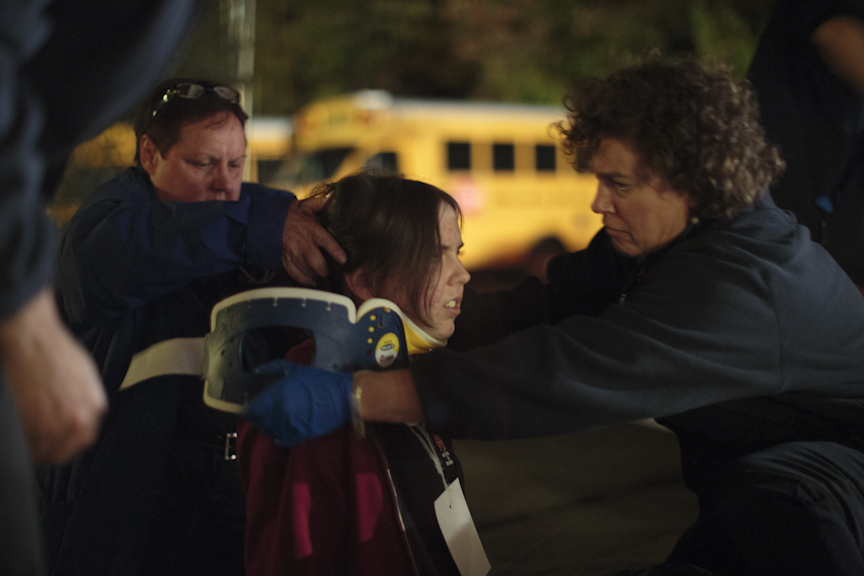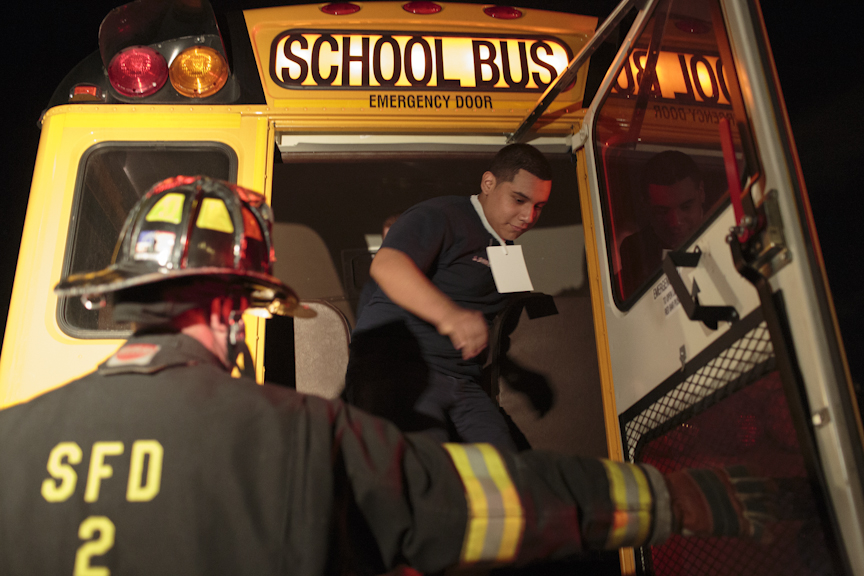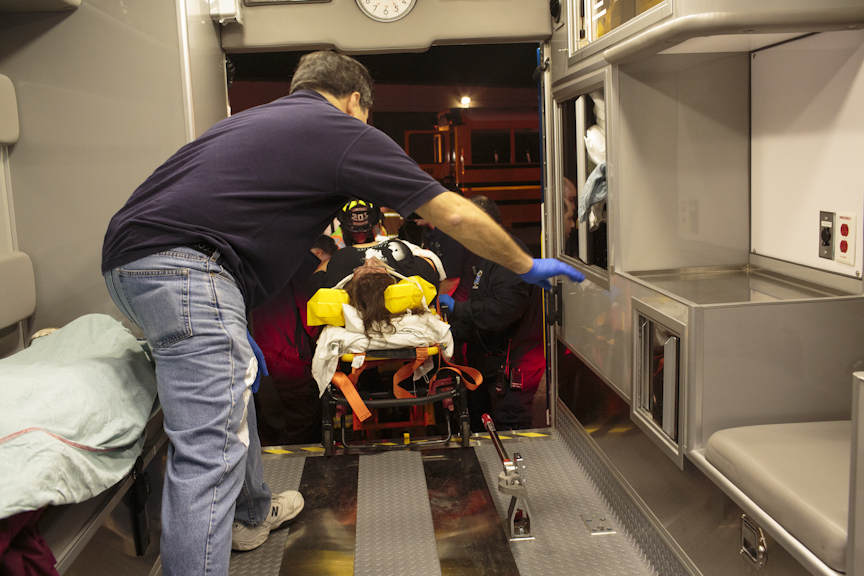Bus Accident Tests Scarsdale EMS Team's Skills
- Thursday, 11 October 2012 14:12
- Last Updated: Thursday, 11 October 2012 15:15
- Published: Thursday, 11 October 2012 14:12
- Hits: 5806
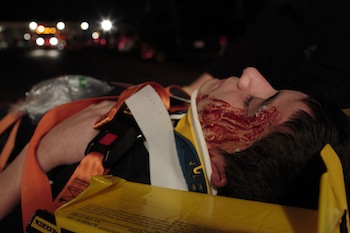 A car driven by a texting teen crashes into a school bus filled with high school students returning from a game. Though it’s only 7:15 pm, it’s already dark – and cold -- and after the screech of brakes and the loud thud of the impact of the crash there is silence. In the back of the bus, jarred and disoriented, one of the teens reaches for his cell phone to call 911. Though he hears moans and cries from the others he does a quick self-assessment and decides he is okay. He looks out the window to try and see where they are – but the emergency operator can already trace his call back to his phone and tells him to hang on – help is on the way.
A car driven by a texting teen crashes into a school bus filled with high school students returning from a game. Though it’s only 7:15 pm, it’s already dark – and cold -- and after the screech of brakes and the loud thud of the impact of the crash there is silence. In the back of the bus, jarred and disoriented, one of the teens reaches for his cell phone to call 911. Though he hears moans and cries from the others he does a quick self-assessment and decides he is okay. He looks out the window to try and see where they are – but the emergency operator can already trace his call back to his phone and tells him to hang on – help is on the way.
Minutes later a police car arrives. The officer jumps out and peers into the car that hit the door of the bus and is blocking the bus door. In the car he sees a young man draped over the steering wheel unmoving – and a passenger in the front covered in blood and glass. It appears that the young man’s head hit the windshield.
The officer quickly sends out a second emergency call for more help. Then an ambulance arrives – staffed by volunteers from Scarsdale Volunteer Ambulance Corps and the team quickly gets to work.
Fortunately there was no bus accident this week; the scenario was simulated as a large-scale training exercise on Wednesday night October 10th at the sanitation lot on Secor Road in Scarsdale. The simulation, which involved over 70 people, was the brainchild of SVAC’s President David Raizen as an educational drill for volunteers and professional emergency workers.
Raizen kept plans for the night under wraps so that volunteers could put their skills to the test in a real-life situation without preparation. Raizen even asked the professional paramedics who usually run emergencies to step aside and let the volunteers take the lead.
The event involved much planning. Students from the Fire Explorer’s Clubs of Scarsdale, Harrison and West Harrison were called in to pose as injured bus riders and arrived early to prepare. The 32 injured students were painted in blood and each assigned an injury demanding a specific treatments. The accident was set up in the lot and the young men in the car were immobile and bloodied.
But this wasn’t just kids stuff. Also on hand were EMS providers, 25 career and volunteer firefighters, four police officers, the Transportation Director of the Scarsdale Schools and a member of the Board of Education. Ambulance teams from Eastchester and Harrison also participated and personnel followed the protocols they use in actual accidents.
Teams went to work to extricate the injured from the car and the bus, mounting the victims on plastic backboards and lifting them one at a time into ambulances. The bus was crowded and cramped and maneuvering was difficult. It took over an hour to clear all the injured from the bus. There were cries of “help”, and “get a pulse” as EMT’s evaluated each student and stabilized them for the trip to the hospital. Since this was a drill, not an actual emergency, Raizen cautioned the participants not to rush as he did not want them to trip or get injured.
Traffic in the lot became a problem as fire trucks, ambulances and police cars sped to the scene. One could quickly see that in an actual emergency maintaining access between the accident and the road would be critical.
Raizen also assigned SVAC staffers to be observers and note what steps were missed and what could be done better in the future. For instance, the EMS workers failed to open the side door of the bus which would have provided a second door to extract the injured from the bus. The SVAC team will review their notes, recap their experience and use the event as a learning exercise.
For those of us who were in the lot observing, the scene appeared to be totally realistic and it was easy to forget that this was just a drill. Hopefully, an accident of this scale will never happen here – but if it does, our EMS staff will be prepared.
Photos by Sarah Schuman – who is a trained photographer and was also a trained SVAC volunteer.










